Trompe Loeil and Other Optical Illusions in Early Modern Art
What is Trompe 50'oeil?
Trompe l'oeil (sometimes stylised every bit trompe-l'œil or trompe loeil) is a French term that, when literally translated, means 'to deceive the eye'. It is an art technique that uses optical illusions for mimetic issue or to push the boundaries of nature, creating puzzling realities.
Trompe fifty'oeil is often used to describe paintings that employ this type of optical illusion technique. The term primarily denotes ii modes in flat art: the use of perspective in both wall and easel painting, as well asquadratura, a type of illusionistic ceiling painting. In both instances, the viewer's eye is manipulated through linear or forced perspective.
Trompe l'oeil techniques continue to be used by contemporary artists to create reality-angle works. The method is past no ways limited to painting, however, as Trompe l'oeil murals are as well extremely popular. In improver, it can exist used to refer to anything that tricks the centre, be it in film or way.
History of Trompe l'oeil
The ability to imitate nature totally has captured the commonage imagination of artists for millennia. In his work, the Natural History, Pliny the Elder recounts the painting contest betwixt Zeuxis and Parhassius held to determine the better creative person. In the tale, Zeuxis unveils his piece of work: grapes so lifelike that birds fly down to try and consume them. When trying to unveil the painting by Parhassius, it is revealed that the curtains thought to hide the piece of work was in fact painted themselves. The story ends with Zeuxis albeit defeat, saying it is 1 thing to fool an brute but some other to fool man.
This story was repeated fourth dimension and time again in treatises on painting. From the Renaissance on, artists tried to emulate their classical predecessors to ultimately replicate nature. The advent of techniques such every bit linear perspective and foreshortening used to accomplish naturalism are closely linked to the development of trompe fifty'oeil and are oft used together for added event.
Trompe l'oeil Painting
Though trompe fifty'oeil tin can be used to enhance the impression of reality, artists such as Leonardo envisioned painting as an open window to another world birthday. This thought is encapsulated by Masaccio's The Holy Trinity, painted like an altar in which Christ, the Virgin and St John the Baptist miraculously appear. In incorporating the surroundings of Santa Maria Novella, and using fictive, trompe l'oeil elements such as pillars and a coffered barrel vault ceiling, Masaccio was able to enhance this illusionistic depth.
Trompe 50'oeil every bit a technique is grounded in linearity, artists using potent horizontal and rectilinear forms to achieve a certain outcome. This is particularly evident in ceiling painting.Quadratura incorporates foreshortening among other tools to create the illusion of three-dimensional space.
The techniquedi sotto in sù –or seen from beneath – is an early development of this. Exemplified in Mantegna's ceiling painting in the Ducal Palace in Mantua, which depicts an oculus – or a round opening in a dome – revealing a blue sky. This opening is surrounded by an ornamental balcony around which putti and other figures look down onto the viewer. Later examples of quadratura, such every bit the work of Andrea Pozzo, connected this apply of imagined architectural elements to extend and elevate pre-existing structures.
Trompe l'oeil outside of Italy
Although trompe fifty'oeil was a mutual technique used during the Italian Renaissance – as well as the Baroque period – it was past no means limited to Italy. From the 15th century onwards, the technique was used by painters across Europe and the U.s.a..
Works by the Dutch primary, Evert Collier, showcase how the use of parallel lines in the guise of everyday objects, such as a letter rack, add to an illusion of three-dimensionality.
The Early on Netherlandish artist Petrus Christus used small trompe fifty'oeil elements such every bit flies – as can be seen inPortrait of a Carthusian – in his portraits to further blur this line between the real and the painted. Likewise, techniques similargrisaille– or the use of grey-calibration – and fake marbling and wood graining help create the illusion of reality.
After Uses of Trompe l'oeil
Trompe l'oeil continued to be a popular motif across fine and decorative art. In his famed workEscaping Criticism, 19thursday century Spanish Painter Pere Borrell del Caso incorporates a painted frame to brand the figure appear as if they are coming along from their plane into the realm of the viewer.
The 19th-century American painter William Harnett became renowned for his trompe fifty'oeil still life paintings. Using similar techniques to the same Collier, such as carefully placed lines and shadow, Harnett is able to make an ordinary scene, similar a pile of books, appear real.
Trompe l'oeil has also been used in article of furniture and interior blueprint. This was by no means a new evolution. The famed studiolo from the Ducal Palace in Gubbio, which dates to the tardily fifteenth century, used intricate intarsia work to give the illusion of three-dimensional interiors, including opened cabinets, books, and instruments. Cabinets, tables and other piece of furniture had trompe 50'oeil elements, such as a deck of cards, to both fool and charm viewers.
Trompe 50'oeil: Modern art and Beyond
In contemporary art, the definition is less fixed. The term trompe l'oeil tin be used to describe works in other media, such equally ceramic or hyperrealist sculpture, that attain the true to life appearance of some other object or beingness.
Trompe l'oeil has found use in public works to enhance buildings and to create puzzling realities. A famous example of this is the awe-inspiring trompe fifty'oeil mural for the Fontainebleau Hotel in Miami, created by American muralist Richard Haas, which has sadly now been destroyed. The building facade was painted to appear similar an arch that opened up, with another edifice in the fore. This was not a piece of work of fiction, every bit the building in the landscape is one that was subconscious by the wall.
Trompe l'oeil murals equally play with fantasy and realistic imagery. The contemporary artist Jenny McCracken creates illusionistic paintings on walls and floors, that appear to spring to life in front of the viewer when viewed from a certain management.
Recently, trompe 50'oeil and the power of optical illusion has been used in the media, including in guerilla marketing campaigns. In 2011, Copenhagen Zoo launched a campaign that included a large snake wrapped around city buses.
Because the bear on trompe 50'oeil has had, it is no wonder that artists continue to use pictorial and spatial illusionism to curve the globe around us, blurring the boundaries between the realistic and fictional.
Notable Trompe-lœil Artworks

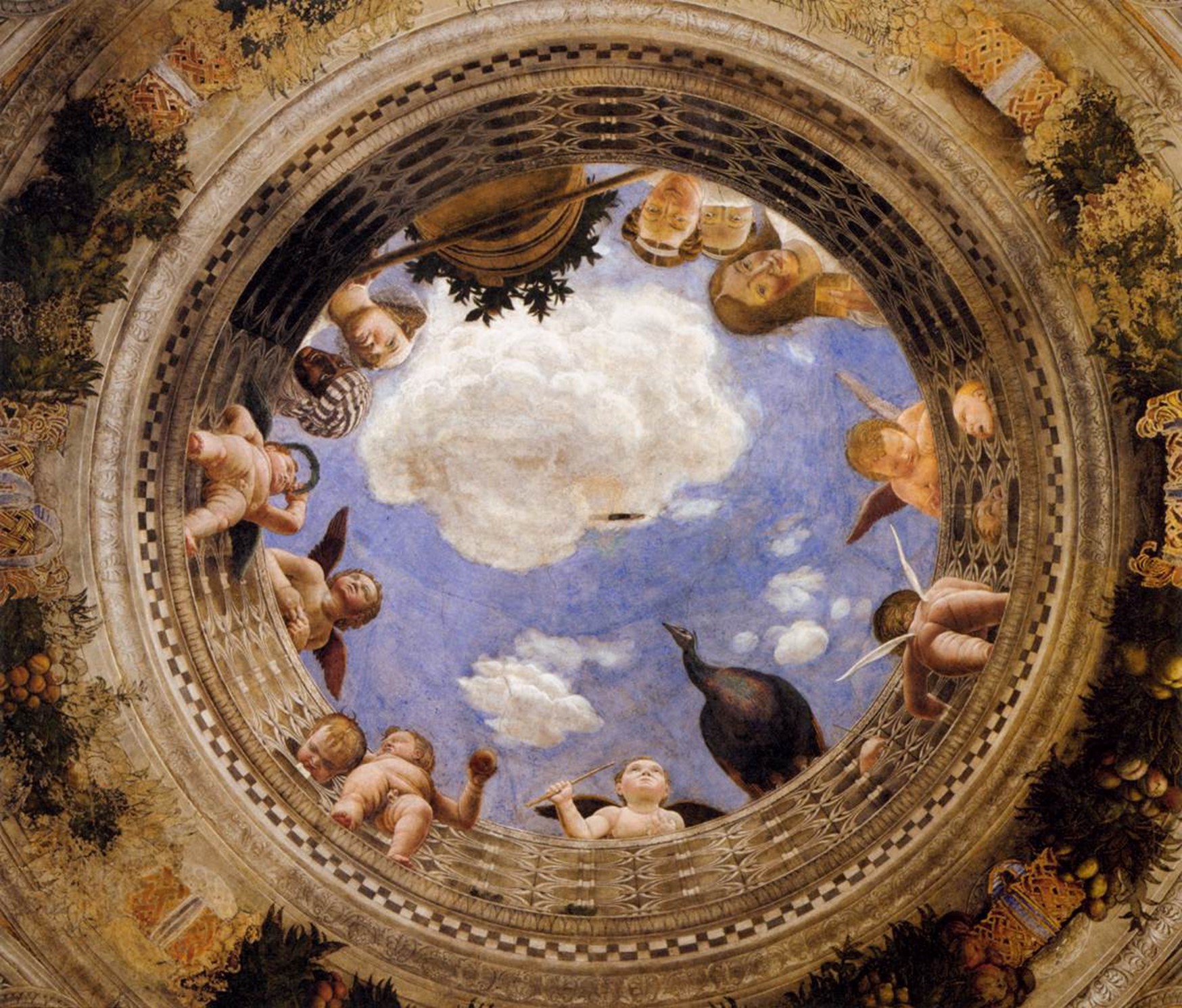
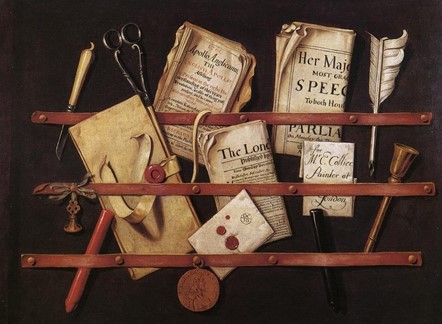
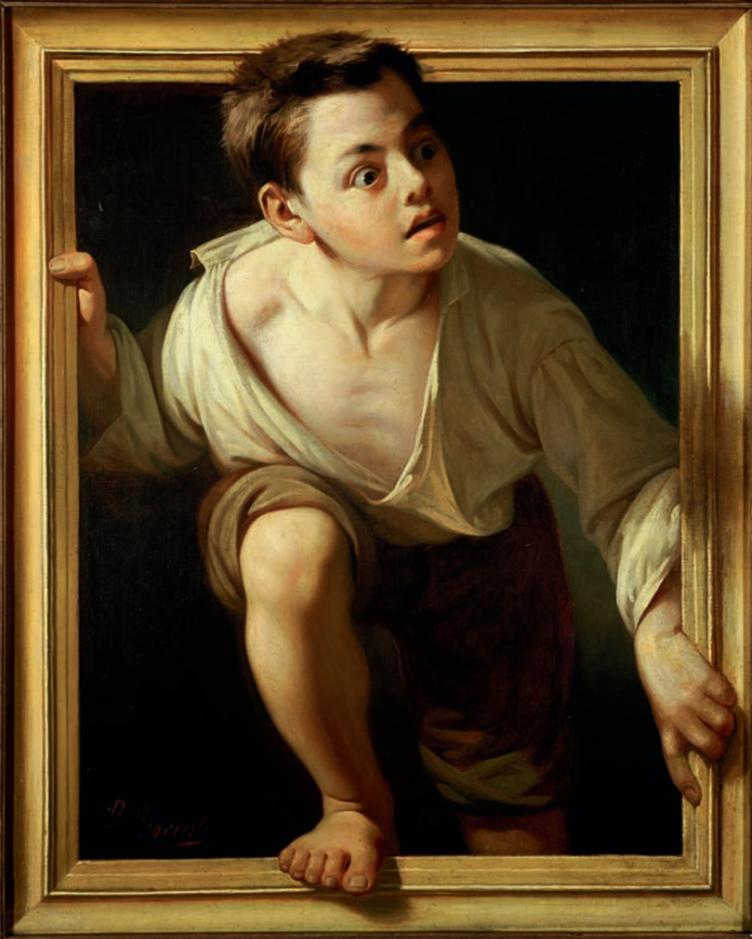
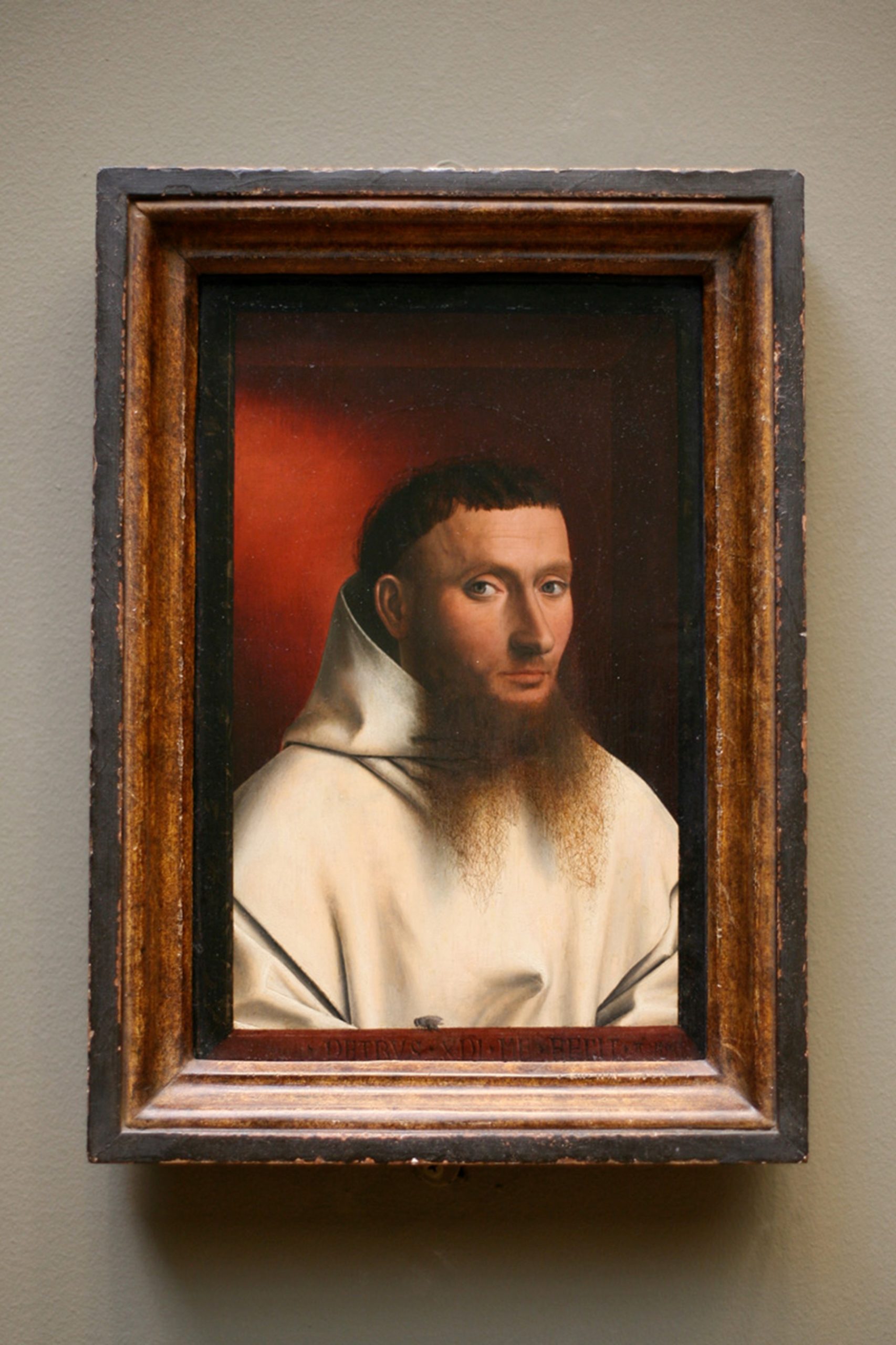
William Harnett, The Banker's Table, 1877, oil on canvas, Metropolitan Museum of Art, New York.
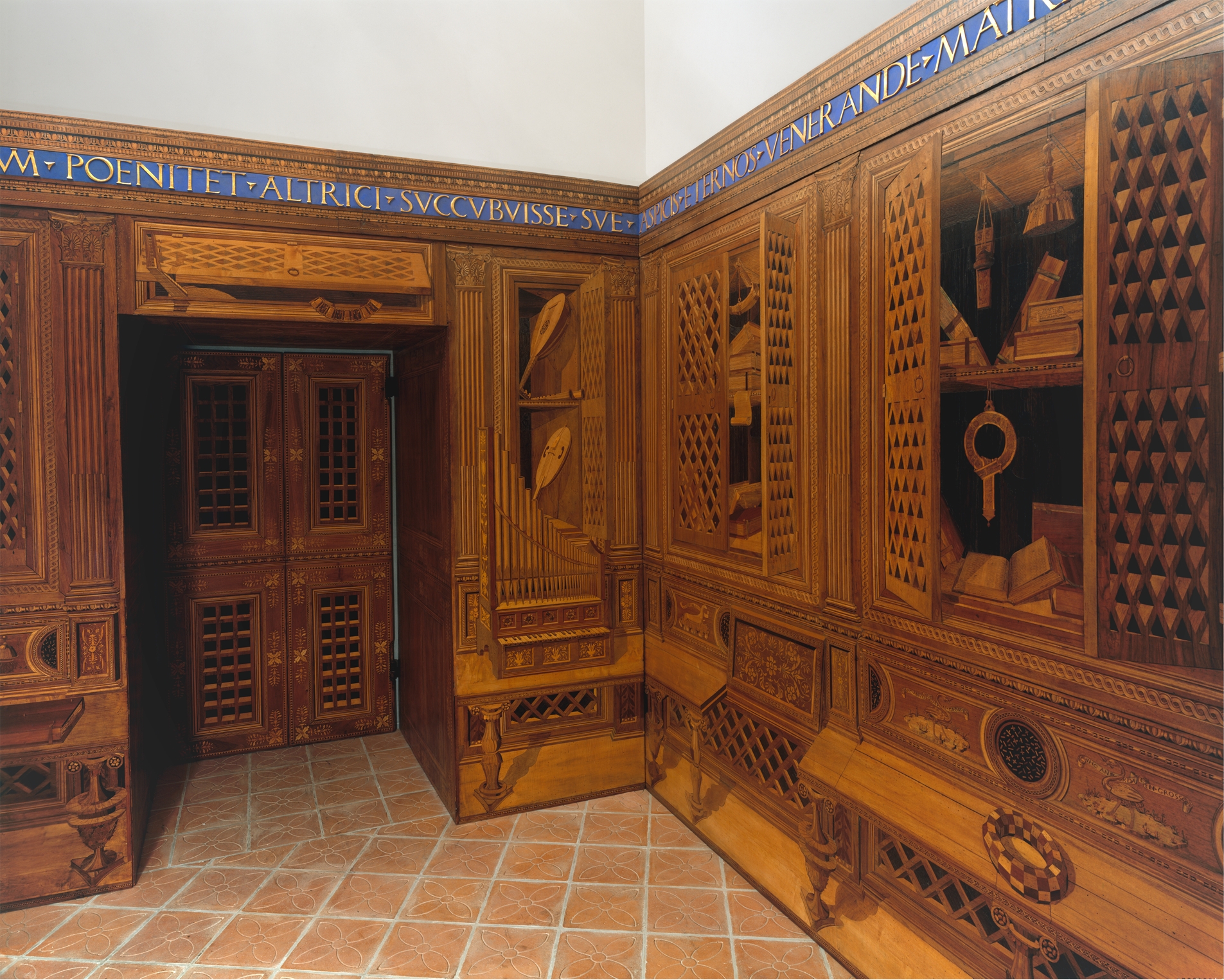
Francesco di Giorgio Martini, the Studiolo from the Ducal Palace in Gubbio, c. 1478-82, wood intarsia, the Metropolitan Museum of Art, New York.

Richard Haas, Sometime Mural from the Fontainebleau Hotel, 1986-2003, Miami.

Jenny McCracken, A Flight of Fancy, Mareeba, Commonwealth of australia.

Sylvia Hyman, Crate of Books and Things, 2002, ceramic stoneware.
Source: https://www.artlex.com/art-terms/t/trompe-loeil/
Post a Comment for "Trompe Loeil and Other Optical Illusions in Early Modern Art"